How to solve character encoding problems in Java development
In Java development, character encoding problems are a common challenge. Character encoding is the process of mapping characters into numbers, which is necessary during the storage, transmission, and processing of data. However, different encoding standards and encoding methods lead to confusion and inconsistency in character encoding. Resolving character encoding issues is critical to the correct operation of programs and accurate processing of data. This article will introduce some common character encoding problems and provide solutions.
First of all, a common character encoding issue is compatibility between different platforms. Different operating systems and software platforms use different default encodings. When the program is run on different platforms, characters may be parsed incorrectly. To solve this problem, it is recommended to use an explicit character encoding, such as UTF-8. UTF-8 is an encoding method for the Unicode character set. It can represent almost all characters and has good compatibility on multiple platforms. In Java, you can use classes such as InputStreamReader and OutputStreamWriter to explicitly specify character encoding.
Secondly, character encoding problems may also occur in file reading and writing and network transmission. When reading text from a file or network, character encoding must be handled correctly, otherwise garbled characters may appear. In Java, files can be read and written using classes such as FileInputStream and FileOutputStream. When reading or writing files, you can ensure correct character parsing and encoding by specifying the character encoding. In addition, during network transmission, it is necessary to ensure that the sender and receiver use the same character encoding method to avoid garbled characters.
Another common character encoding problem is the generation of garbled characters when storing and retrieving characters in the database. In a database, storing and retrieving characters requires the correct character encoding. First, make sure that the character set of the database is set correctly and matches the character encoding specified in the program. Second, when inserting or retrieving data, make sure you use the correct character encoding. For common databases such as MySQL and Oracle, you can specify the character encoding method by setting the character encoding parameters in the connection string, or using an appropriate database connection class.
In addition, there are some special character encoding issues that need to be paid attention to. For example, special characters in URLs need to be encoded to ensure their correct parsing and transmission. In Java, you can use the URLEncoder and URLDecoder classes under the java.net package for URL encoding and decoding. In addition, correct character encoding is also required for strings containing HTML tags to prevent them from being incorrectly parsed or damaging the page structure. HTML character encoding and decoding can be done using the StringEscapeUtils class from the Apache Commons Lang library.
In short, it is necessary and important to solve the character encoding problem in Java development. When dealing with different platforms, file reading and writing, network transmission and database operations, pay attention to correctly specifying and handling character encoding methods. Using a clear character encoding, such as UTF-8, can improve program compatibility and reliability. In addition, correct encoding and decoding of special characters is an important step to ensure correct processing of data.
The above is the detailed content of What are the solutions to character encoding problems in Java development?. For more information, please follow other related articles on the PHP Chinese website!
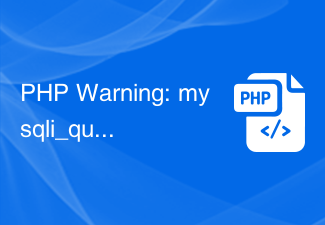 PHP Warning: mysqli_query(): Empty query的解决方法Jun 22, 2023 pm 04:45 PM
PHP Warning: mysqli_query(): Empty query的解决方法Jun 22, 2023 pm 04:45 PM在使用PHP开发Web应用时,经常会遇到各种各样的问题。其中,一些常见的问题是与MySQL数据库相关的问题。有一种问题是“PHPWarning:mysqli_query():Emptyquery”的错误。本文将介绍此错误的原因以及解决方法。首先,让我们看看这个错误表示什么。当您使用mysqli_query函数执行MySQL查询时,如果该查询为空,则会
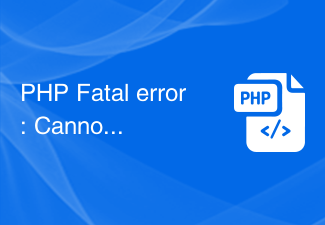 PHP Fatal error: Cannot redeclare的解决方法Jun 22, 2023 pm 07:43 PM
PHP Fatal error: Cannot redeclare的解决方法Jun 22, 2023 pm 07:43 PM在使用PHP进行开发的过程中,有时候会遇到“PHPFatalerror:Cannotredeclare”错误,这个错误通常会出现在如下情况:在PHP代码中多次include/require同一个文件。在代码中定义了和已有的函数/类重名的函数/类。这个错误会导致程序无法继续执行,为了解决这个问题,我们需要了解其产生原因和解决方法。产生原
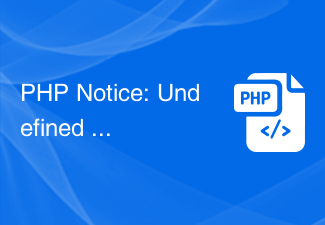 PHP Notice: Undefined property: stdClass::$的解决方法Jun 22, 2023 pm 10:24 PM
PHP Notice: Undefined property: stdClass::$的解决方法Jun 22, 2023 pm 10:24 PM在使用PHP编写代码时,我们经常会看到这样的错误提示:“PHPNotice:Undefinedproperty:stdClass::$”。这个错误提示通常是由于在使用对象的属性时,该属性不存在而引起的。在本文中,我们将讨论如何解决这个问题。首先,我们需要了解这个错误提示的原因。当我们使用对象的属性时,PHP会首先检查该属性是否存在。如果该属性不存在,
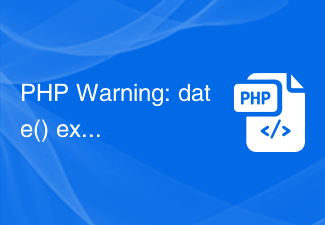 PHP Warning: date() expects parameter 2 to be long, string given的解决方法Jun 22, 2023 pm 08:03 PM
PHP Warning: date() expects parameter 2 to be long, string given的解决方法Jun 22, 2023 pm 08:03 PM在使用PHP程序开发时,经常会碰到一些警告或者错误的提示信息。其中,可能出现的一个错误提示就是:PHPWarning:date()expectsparameter2tobelong,stringgiven。这个错误的提示信息意思是:函数date()的第二个参数期望是长整型(long),但是实际传递给它的是字符串(string)。那么,我们
 PHP Notice: Trying to get property ‘的解决方法’ of non-object的解决方法Jun 22, 2023 am 11:51 AM
PHP Notice: Trying to get property ‘的解决方法’ of non-object的解决方法Jun 22, 2023 am 11:51 AM当我们在使用PHP进行开发时,有时会遇到”Tryingtogetproperty‘的解决方法’ofnon-object”的错误提示。这个错误的原因一般是因为程序中对一个不存在或者未实例化的对象进行访问,导致了PHP解析器无法识别该对象的属性或方法。那么,如何解决这个错误呢?下面我将为大家介绍几种可能的解决方法。一、检查代码首先,我们需要将出错的代
 TranslucentTB不起作用:如何解决Jun 06, 2023 am 08:21 AM
TranslucentTB不起作用:如何解决Jun 06, 2023 am 08:21 AMTranslucentTB是寻求时尚简约桌面外观的Windows11爱好者广泛使用的工具,遇到了障碍。自从发布以来Windows11内部版本22621.1344(22H2)28年2023月日,TranslucentTB对大多数用户不起作用。此错误使用户努力应对其任务栏的有限自定义选项。用户在寻求克服这一挫折的解决方案时,挫败感显而易见。在最近的Windows11更新之后,TranslucentTB无法正常工作的问题已在多个在线平台上广泛报道,包括论坛和社交媒体。用户一直在分享他们的经验,拼命寻找
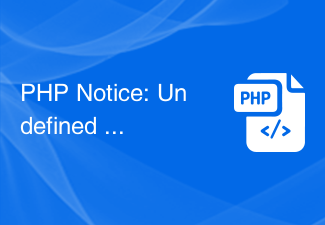 PHP Notice: Undefined index:的解决方法Jun 22, 2023 am 10:15 AM
PHP Notice: Undefined index:的解决方法Jun 22, 2023 am 10:15 AM当使用PHP开发Web应用程序时,经常会遇到“PHPNotice:Undefinedindex:”这样的错误消息。此错误消息通常与数组相关。在PHP中,当我们使用未定义的数组索引时,就会收到这种类型的错误消息。这通常会发生在以下情况下:尝试访问不存在的数组元素尝试使用错误的键来访问数组在本文中,我们将探讨如何解决此错误,并提供一些常见的应用程序开发实践
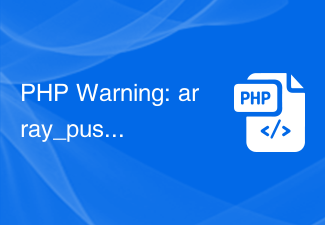 PHP Warning: array_push() expects parameter 1 to be array的解决方法Jun 22, 2023 pm 07:17 PM
PHP Warning: array_push() expects parameter 1 to be array的解决方法Jun 22, 2023 pm 07:17 PMPHPWarning:array_push()expectsparameter1tobearray的解决方法在PHP开发中,我们常常会遇到“TheWarning:array_push()expectsparameter1tobearray”错误。这个错误通常表示我们使用了一个不是数组的变量作为array_push的第一个参数。


Hot AI Tools

Undresser.AI Undress
AI-powered app for creating realistic nude photos

AI Clothes Remover
Online AI tool for removing clothes from photos.

Undress AI Tool
Undress images for free

Clothoff.io
AI clothes remover

AI Hentai Generator
Generate AI Hentai for free.

Hot Article

Hot Tools

SAP NetWeaver Server Adapter for Eclipse
Integrate Eclipse with SAP NetWeaver application server.

EditPlus Chinese cracked version
Small size, syntax highlighting, does not support code prompt function

Dreamweaver Mac version
Visual web development tools

Notepad++7.3.1
Easy-to-use and free code editor

VSCode Windows 64-bit Download
A free and powerful IDE editor launched by Microsoft






